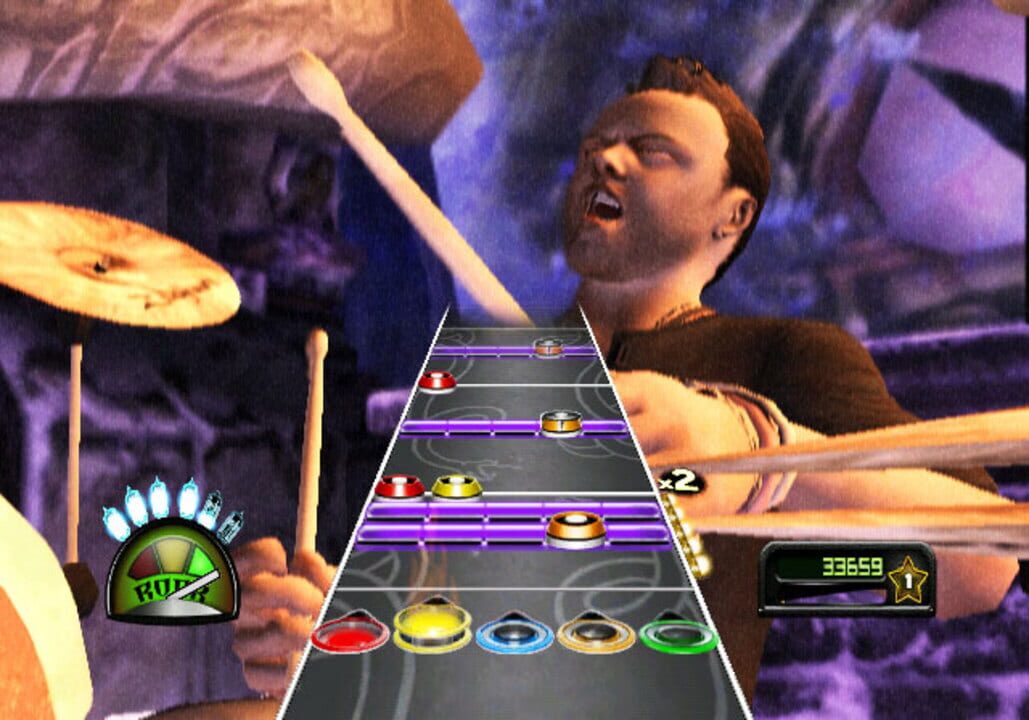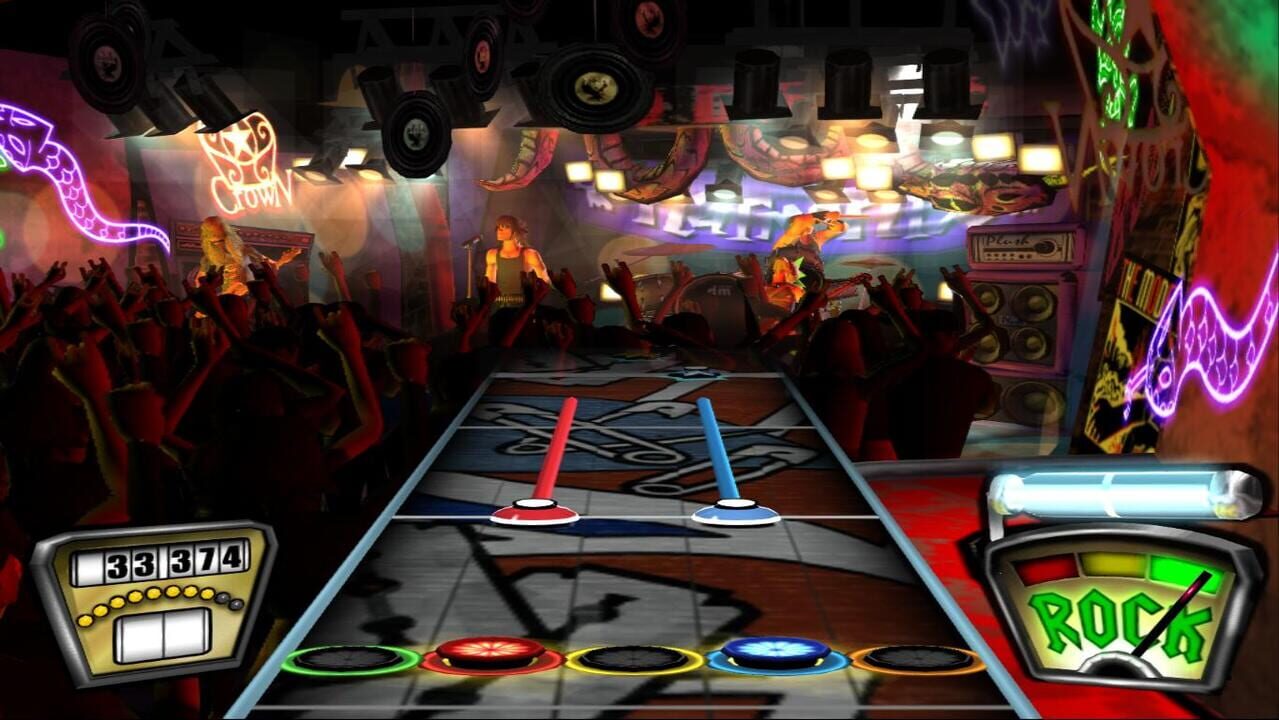

Some of these challenges will be easy for confident players, while others are so difficult that only experts will have a shot. This variety encourages you to mix up the instruments you use or to play with a few friends, and there's a handy onscreen meter that tracks your progress throughout the song. These three-tiered challenges (one extra star per tier) can be either instrument specific (whammy for a certain amount of time as the guitarist) or band-wide (maintain a 4x multiplier for a certain amount of time). Each song has a bonus challenge associated with it that allows you to earn up to eight stars per song instead of the usual five. This mode will feel very familiar to Guitar Hero veterans, but there's one new element that helps keep it from going stale. In Guitar Hero 5, you earn up to five stars for each performance, and the more stars you collect, the more gigs you unlock. If earning rewards for your skills is your thing, Career mode once again provides a place where you progress through different venues, playing songs and unlocking new gigs. The Shirley Manson Clone Army, coming soon to a venue near you. There are high-score categories for each song, each instrument, and each difficulty, so score-seekers of all levels can participate. Quickplay is also a good place to make a bid for a spot on the extensive leaderboards. The crowd meter makes your band less dependent on star power opportunities that may or may not appear in time and also means you don't necessarily have to save your star power for a flagging fellow rocker. There is no limit to how many times you can revive a bandmate, though it does seem to get harder as the fails pile up. If the rest of the band plays well enough for long enough, the failed bandmate is revived and the band keeps on rocking. When a bandmate fails out, a crowd meter pops up. You can still use this method, but Guitar Hero 5 gives you another option. Previously, you could boost flagging bandmates only by using the star power you earned by nailing glowing notes.


Quickplay also makes accommodations for more casual players, allowing only those playing on hard or expert difficulty to fail out.

Here you can construct a set list and play with up to four players, again using whatever instrument combinations you see fit. If you prefer more deliberate and finite sets, then Quickplay is a great place to go.
#Guitar hero 5 pc download how to
Party Play strips away anything that might impede your enjoyment of the game, and as a result, Guitar Hero 5 shines as an example of how to make music games accessible and fun for a wide range of players. A way to exclude certain songs from the random play rotation would have been welcome, but you can temporarily interrupt a song to create a set list and then jump right back into the music. It's a great way to entice shy friends to join in the fun, and it makes firing up Guitar Hero 5 at a party a more informal prospect. The music keeps playing, and you can tailor your experience on the fly without any abrupt pauses or song restarts. You can jump in and out as you like, rotating in other players or just taking a break. The result is a casual play environment that is accessible, welcoming, and delightfully low key. You can't fail in this mode, and changing difficulty, skipping the song, and dropping out are all easily accomplished through a little menu that only obscures your own note highway. Two vocalists, a drummer, and a bass player? Yes. Up to four players can join this way, using whatever combination of instruments they want. Your note highway appears, and after selecting a few options, you're playing the Guitar Hero you know and love. You can press the start button to call up the main menu, or you can press the yellow button to jump right into the song being performed. When you start up the game, you see a brief intro animation, and then the game starts up a random song and a video of Guitar Hero characters performing. The most significant new feature in Guitar Hero 5 is Party Play mode.


 0 kommentar(er)
0 kommentar(er)
